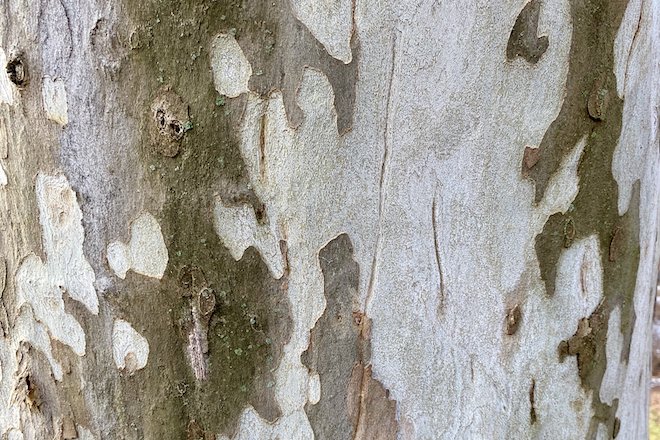This week: Majestic Sycamore + Thanksgiving Freebie
Hello!
Since it is Thanksgiving week, I thought I’d feature a classic American native tree—the Sycamore (and a Sycamore-related download if you make it to the end). Platanus occidentalis ranks among the tallest trees in the east, often growing to 120 feet tall with a more than 6-foot diameter. It’s also long-lived and only begins to slow down its seed production after its 200th birthday.

You’ll often see American Sycamores in the bottomlands along creeks and rivers. They stand out because their distinctive exfoliating grey-brown bark falls away to reveal a snowy-white underbark that you can easily spot from afar. While their relative, the London Planetree, is a common urban street tree, the Sycamore is more at home in natural settings and parks because of its immense growth potential and tendency to shed copious amounts of seed balls, twigs, and bark shards.

As Sycamores mature, their trunks tend to hollow (or less flatteringly, their heartwood rots), creating habitats for cavity-nesting birds like Barred Owls, Eastern Screech Owls, and Chimney Swifts, and even dens for black bears. Apparently, some Ohio Country colonists lived and stabled animals in Sycamore trees as they built permanent shelters. Later, Sycamore wood was used to make butcher blocks and paneling for Pullman train cars. Of course, Indigenous Americans also used Sycamores for their wood and medicinally for colds, wound care, and reproductive health, to name a few.
Finally, a little treat for after the Thanksgiving table is cleared: a printable Sycamore coloring page (pdf) suitable for calming the holiday nerves of all ages.
Elsewhere:
Penn State Extension offers a list of gifts for gardeners just in time for the holiday shopping season.
Happy Thanksgiving!
Julie